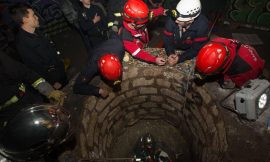The Stratolaunch Roc, developed by US company Stratolaunch, has completed another successful test flight. The Stratolaunch Roc is the world’s largest aircraft, with a wingspan of 117 meters and six Boeing engines. It was originally intended to transport rockets with satellites on board. However, the latest concept involves using the Roc to bring up hypersonic aircraft such as the Talon-A into the air.
During the Roc’s eleventh test flight at Vandenberg Space Force Base in California, the Talon-A hypersonic aircraft’s payload separation was tested successfully for the first time. According to the company, the test flight lasted over four hours, during which the Talon-A launch system separated safely and cleanly from the twin-fuselage carrier aircraft. The data acquisition systems also worked as expected.
The Talon-A hypersonic aircraft is around 4 meters wide and unmanned. It can reportedly reach speeds of Mach 5 to Mach 7, equivalent to 6,175 to 8,643 km/h. During the test flight, the hypersonic aircraft was attached to the Roc on an aluminum and carbon carrier system. On the ground, a winch pulled it up from there and anchored it. During the flight of the Roc carrier aircraft, the Talon-A was released at a suitable altitude without negatively affecting the Roc’s flight characteristics.
Following this successful test, the Talon-A is scheduled to complete a hypersonic flight for the first time in late summer next year. It is a reusable hypersonic aircraft that is designed to glide back to Earth after its mission is complete.
In January this year, the Roc took off for the second time with the Talon-A payload. Previous tests focused on getting the Roc to take off and fly. With this latest successful test, Stratolaunch is closer to achieving its vision of using the Roc to launch hypersonic aircraft into the stratosphere and beyond.



